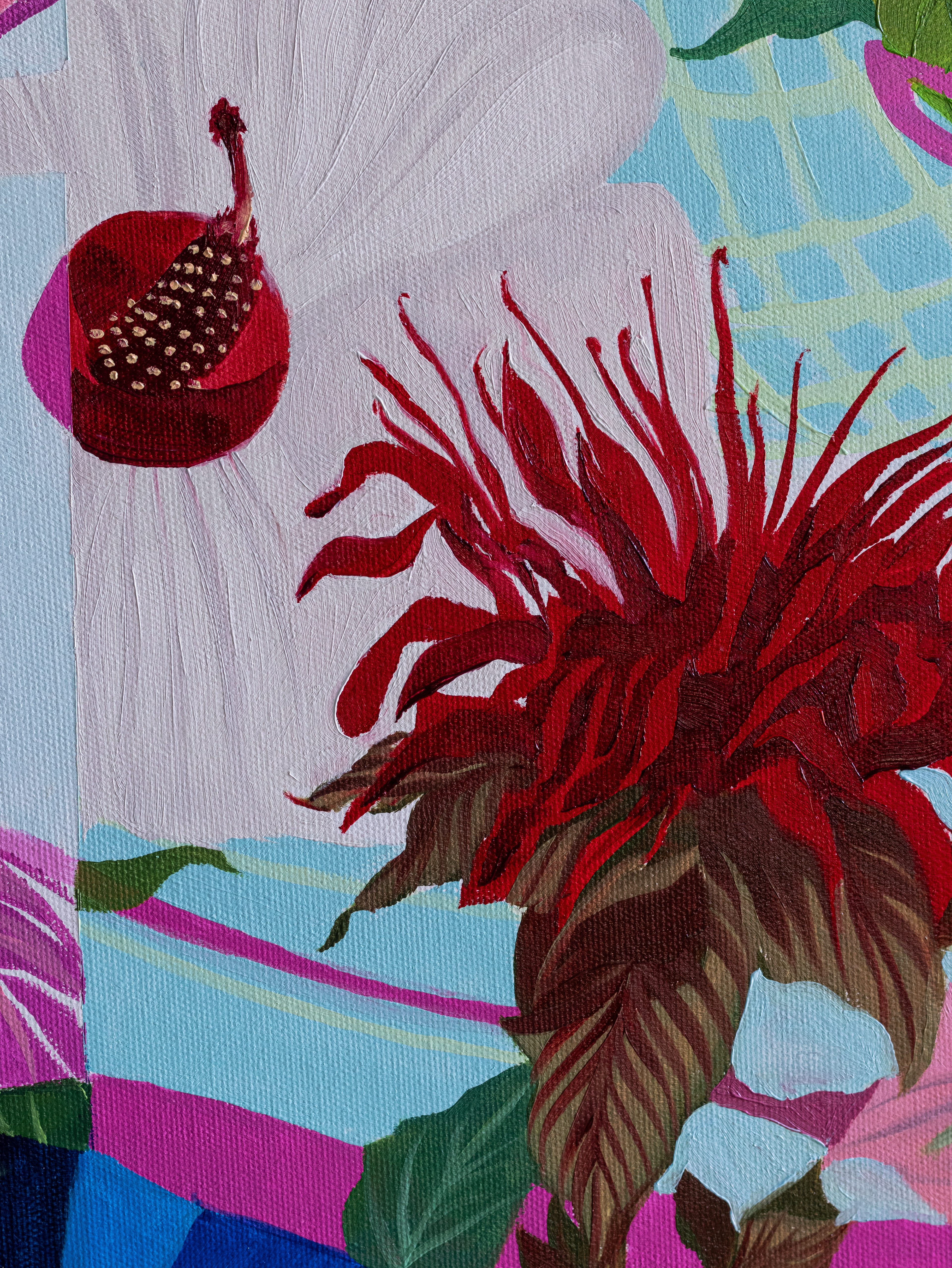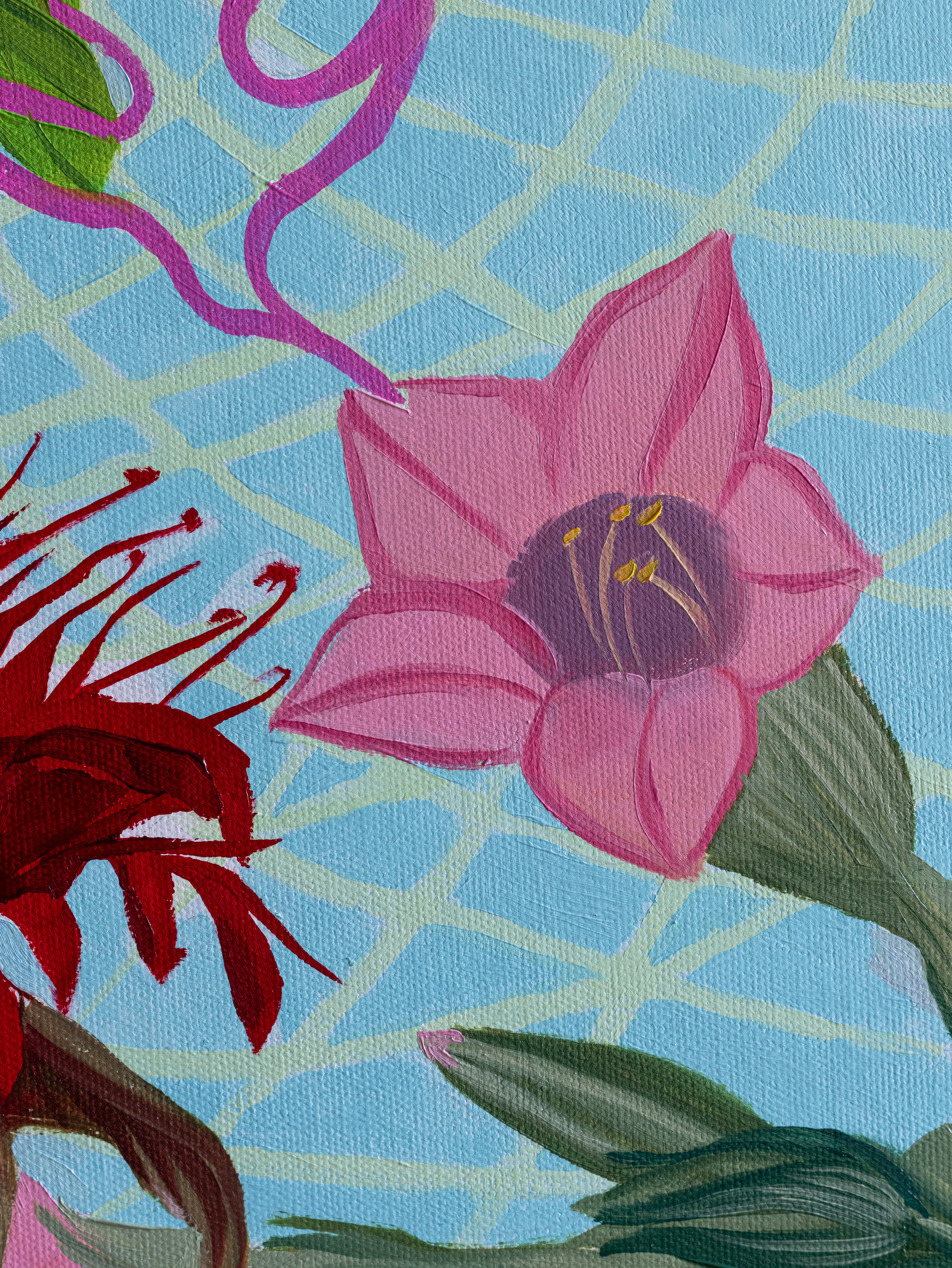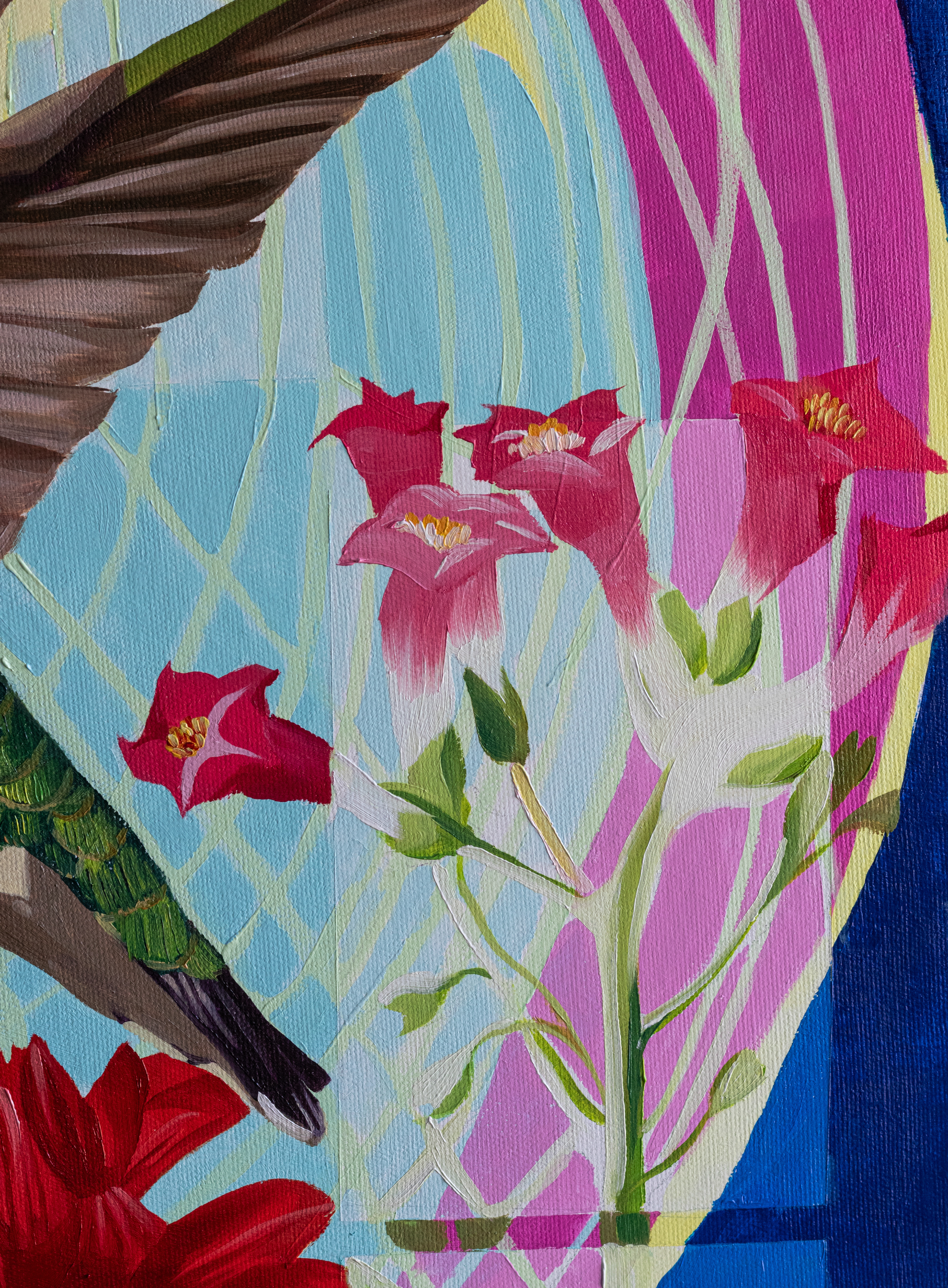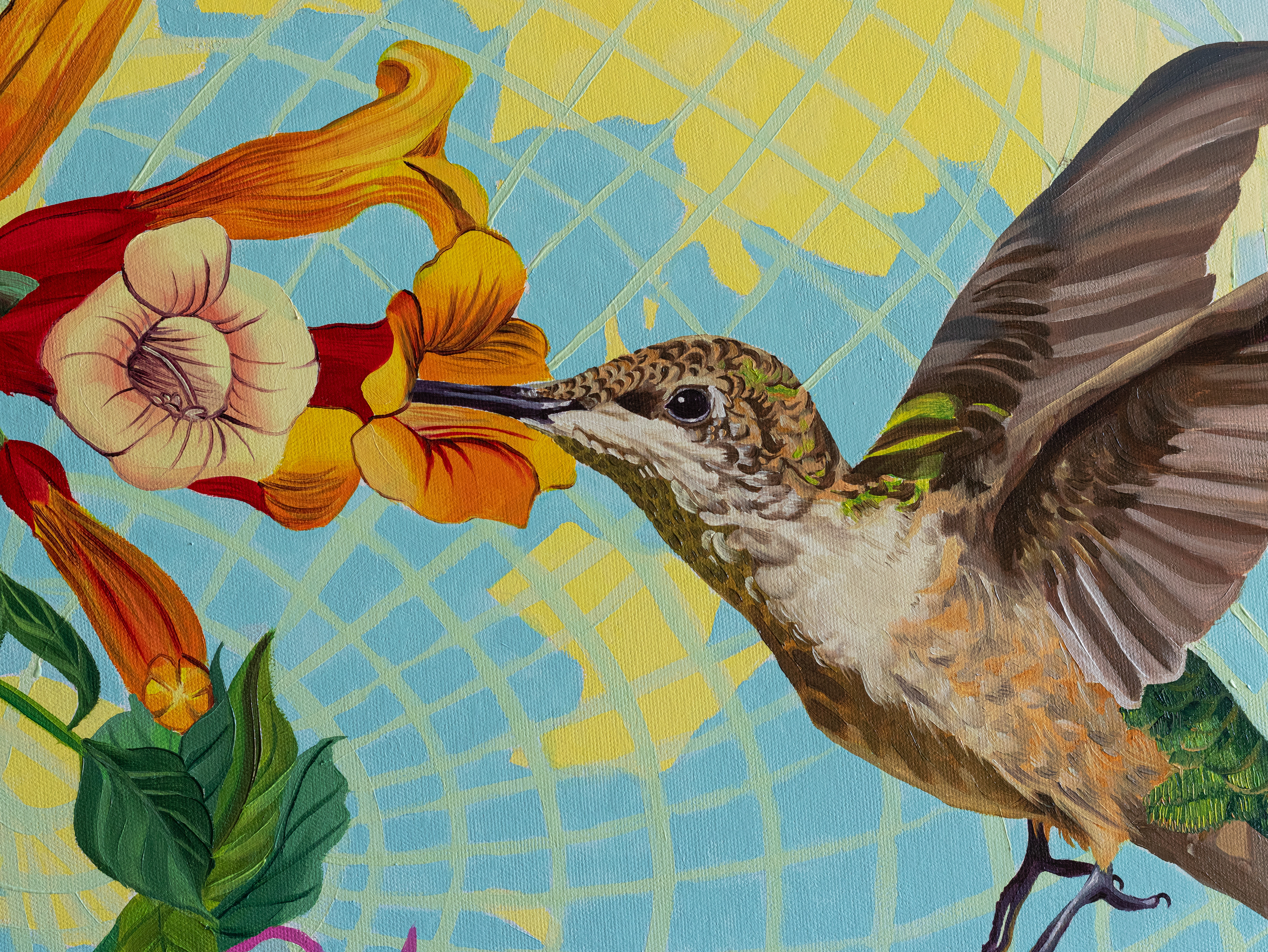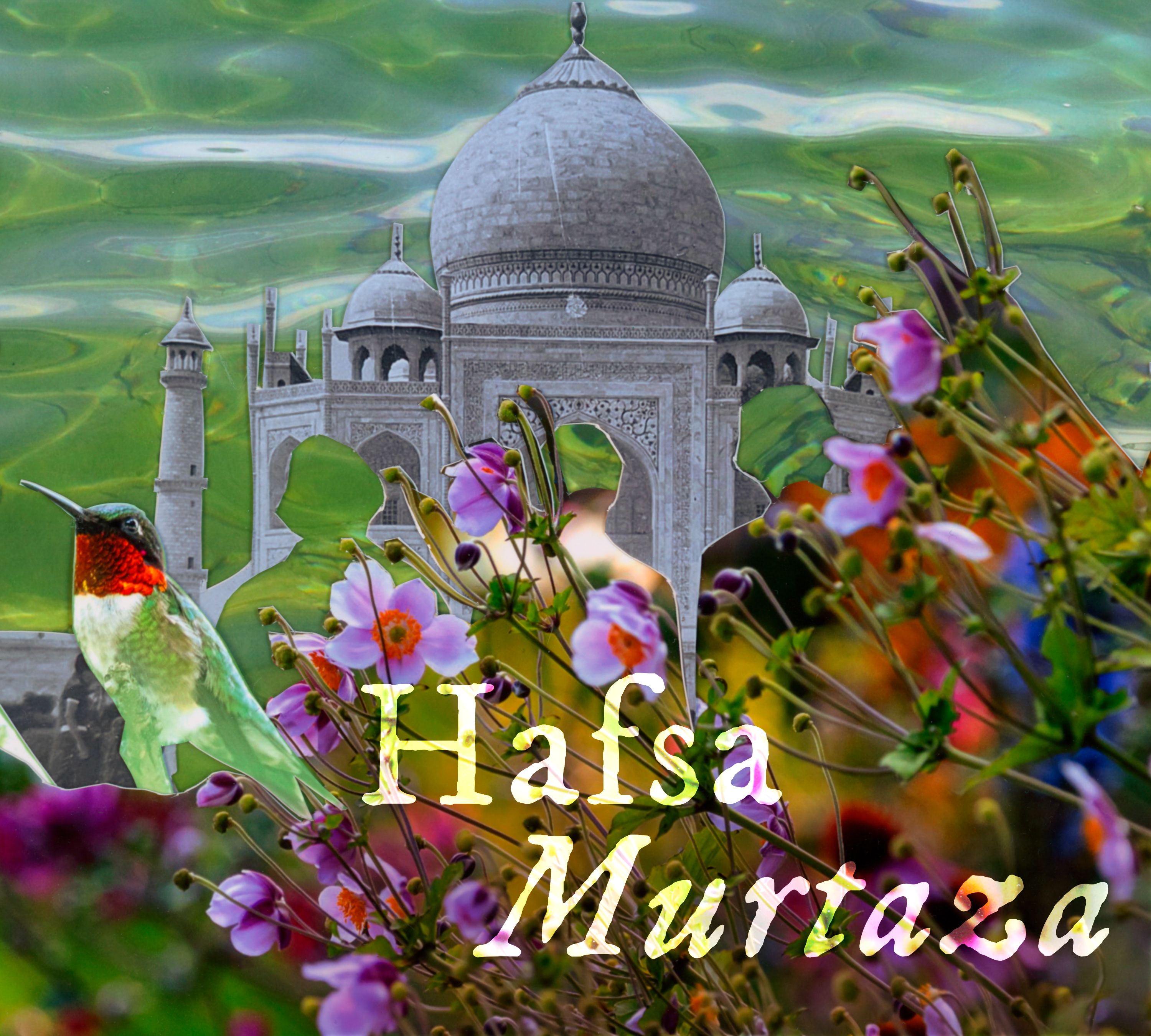Hafsa Murtaza, Decolonizing Hummingbirds through a UV Lens, 2024
Oil and acrylic on canvas.
36" x 30"
Decolonizing Hummingbirds through a UV Lens visually decolonizes the representation of hummingbirds by giving humans a view into their UV world unrestricted by borders. The colonial species illustrator, John James Audubon, would depict Ruby-throated hummingbirds in a large group, male and female, feeding from the same central flower with a decontextualized white background. Yet, this is an unrealistic representation of hummingbirds, who are territorial and habitual in their rotations between flowers, not letting any other hummingbird, even their juvenile, feed with them. Thus, Decolonizing Hummingbirds through a UV Lens has a single female Ruby-throated Hummingbird, central within the composition; Audubon’s depiction of intermingling hummingbirds is reduced to outlines to signify their inaccuracy. The background is a recreation of Tauba Auerbach’s Map Projection I, where land stretches around the periphery of the globe with Africa at a realistically large scale. Flowers native to North America–like bee balm–and South America–hibiscus–represent Ruby-throated hummingbirds’ places of migration. Window panels overlapping with flowers reveal how hummingbirds see the world in UV light due to a fourth ultraviolet cone in their eyes with a drop of coloured oil that makes red hues brighter and blue less visible. However, this accounts for windows being nearly invisible to birds; initiatives in Toronto are making windows sensitive to UV light to prevent bird collisions.
